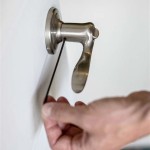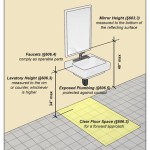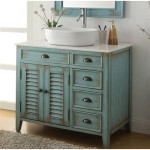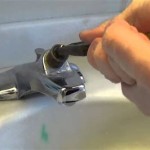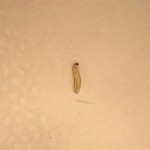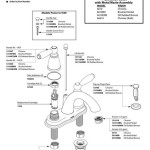How To Remove Old Bathroom Mirrors
Removing an old bathroom mirror can seem like a daunting task, but with the right tools, techniques, and a bit of patience, it can be accomplished safely and effectively. This article provides a comprehensive guide on how to remove an old bathroom mirror without causing damage to the surrounding walls or the mirror itself, if preservation is desired. The process involves careful preparation, understanding the different types of adhesives used, and implementing specific removal strategies. Safety precautions are paramount throughout each stage.
The first step in any mirror removal project is thorough preparation. This involves gathering the necessary tools and materials, protecting the surrounding area, and understanding the potential challenges that may arise during the removal process. Rushing into the task without proper preparation can lead to damage, injury, or an unsuccessful removal.
Gathering the Necessary Tools and Materials
Before commencing the removal process, it is crucial to assemble the required tools and materials. This ensures that the task can be completed efficiently and safely. The following is a list of essential items:
*Safety Glasses:
Protecting the eyes from potential glass shards is paramount. *Work Gloves:
Wearing gloves provides a better grip and protects the hands from cuts and abrasions. *Painter's Tape:
This tape is used to protect the surrounding wall and prevent paint from chipping. *Putty Knife or Scraper:
A flexible putty knife or scraper is used to gently detach the mirror from the wall. Several sizes may be beneficial to address different areas. *Utility Knife:
A utility knife is helpful for scoring caulk or adhesive around the mirror's edges. *Piano Wire or Cheese Wire:
This thin, strong wire can be used to cut through adhesive behind the mirror. *Hair Dryer or Heat Gun:
Applying heat can soften the adhesive, making removal easier. A heat gun should be used with extreme caution to avoid damaging the wall or mirror. *Spray Bottle with Water and Dish Soap:
This mixture can be sprayed behind the mirror to lubricate and loosen the adhesive. *Hammer:
A hammer is only necessary if the mirror needs to be broken intentionally. It should be used very carefully and only as a last resort. *Measuring Tape:
Measuring the mirror and surrounding area can help in planning the removal strategy. *Cardboard or Drop Cloth:
Protecting the floor and surrounding surfaces from debris is essential. *Trash Bags:
Having trash bags readily available for disposing of broken glass and debris is necessary. *Mirror Mastic Remover (Optional):
If the mirror is held in place by mirror mastic, a specialized remover can be used to soften the adhesive. *Stud Finder:
Locating wall studs can help determine the best approach for removing the mirror and minimizing wall damage.Having these tools and materials readily available will streamline the removal process and minimize potential delays.
Protecting the Surrounding Area
Protecting the surrounding area is crucial to prevent damage to walls, floors, and fixtures. This step involves several key measures:
*Covering the Floor:
Place a drop cloth or cardboard on the floor beneath the mirror to protect it from falling debris. This is especially important if the floor is made of delicate material such as tile or hardwood. *Taping the Edges:
Use painter's tape to protect the surrounding walls from scratches and chipping. Apply the tape carefully along the perimeter of the mirror, ensuring that it is securely attached to the wall. *Protecting Fixtures:
Cover any nearby fixtures, such as sinks or countertops, with towels or plastic sheeting to prevent damage from falling glass or debris. *Ventilation:
Ensure proper ventilation in the bathroom, especially if using chemical removers or a heat gun. Open a window or turn on the exhaust fan to dissipate any fumes or heat.By taking these protective measures, potential damage to the bathroom can be significantly reduced.
Understanding Adhesive Types and Removal Strategies
The type of adhesive used to secure the mirror to the wall significantly impacts the removal strategy. Common adhesives include mirror mastic, construction adhesive, and double-sided tape. Identifying the type of adhesive used is crucial for selecting the appropriate removal technique.
*Mirror Mastic:
Mirror mastic is a strong adhesive specifically designed for bonding mirrors to surfaces. It is typically applied in blobs or strips across the back of the mirror. Removing mirrors attached with mastic can be challenging and often requires specialized techniques. *Construction Adhesive:
Similar to mirror mastic, construction adhesive is a strong, general-purpose adhesive that can be used to secure mirrors. It is typically more difficult to remove than double-sided tape but may be easier to remove than mirror mastic. *Double-Sided Tape:
Double-sided tape is a less permanent adhesive often used for smaller or lighter mirrors. It is generally easier to remove than mastic or construction adhesive but can still leave residue on the wall. *Caulk:
Caulk is frequently used to seal the edges of the mirror to prevent moisture from getting behind it. Remove caulk thoroughly before attempting to remove the mirror.Once the type of adhesive is identified, the corresponding removal strategy can be implemented. However, it is crucial to remember that the removal process may vary depending on the individual circumstances and the condition of the wall.
Step-by-Step Guide to Mirror Removal
The following steps outline a systematic approach to removing an old bathroom mirror. It is important to proceed carefully and patiently, as rushing the process can lead to damage or injury.
1.Prepare the Mirror Surface:
Begin by cleaning the surface of the mirror with a glass cleaner to remove any dirt or grime. This will improve visibility and facilitate the removal process. 2.Score the Caulk:
Use a utility knife to carefully score along the edges of the mirror where it meets the wall. This will break the seal created by the caulk and prevent it from pulling away the paint when the mirror is removed. 3.Apply Heat (Optional):
If the mirror is suspected to be attached with a strong adhesive, such as mirror mastic, applying heat can help soften the adhesive. Use a hair dryer or heat gun on a low setting to gently heat the back of the mirror. Be careful not to overheat the mirror or the surrounding wall, as this can cause damage. It's best to focus heat on the edges and center of the mirror. 4.Attempt to Loosen the Mirror:
Gently insert a flexible putty knife or scraper between the mirror and the wall at one of the corners. Apply gentle pressure to try and separate the mirror from the wall. If the mirror does not budge easily, do not force it. Instead, try applying more heat or using a different removal technique. 5.Use Piano Wire or Cheese Wire:
If the putty knife is not effective, try using piano wire or cheese wire to cut through the adhesive behind the mirror. Carefully slide the wire behind the mirror and use a sawing motion to cut through the adhesive. This may require some patience and persistence. Work slowly and methodically to avoid breaking the mirror or damaging the wall. 6.Spray with Water and Dish Soap:
If the mirror is still resisting removal, try spraying a mixture of water and dish soap behind the mirror. This can help lubricate the adhesive and make it easier to separate the mirror from the wall. Use a spray bottle to apply the mixture to the back of the mirror, focusing on the areas where the adhesive is the strongest. 7.Pry the Mirror Slowly:
Once the adhesive has been softened or cut through, slowly and carefully pry the mirror away from the wall. Use a putty knife or scraper to gently lever the mirror off the wall, working your way around the perimeter. If the mirror is large or heavy, it may be helpful to have a second person assist with the removal. 8.Dealing with Stubborn Areas
: If some areas are still stubbornly attached, avoid excessive force. Reapply heat, water/soap solution or mastic remover into the resisting gaps. Patience is crucial to avoid wall damage. 9.Remove Adhesive Residue:
After the mirror has been removed, there will likely be adhesive residue remaining on the wall. Use a putty knife or scraper to carefully remove the residue, being careful not to damage the wall. For stubborn residue, a specialized adhesive remover may be necessary. 10.Clean and Repair the Wall:
Once the adhesive residue has been removed, clean the wall with a damp cloth to remove any remaining debris. If the wall has been damaged during the removal process, repair it with spackle or drywall compound. Allow the repair to dry completely before painting or applying new wallpaper.Safety Precautions
Safety should be the top priority during the mirror removal process. It is crucial to take the following precautions to prevent injury:
*Wear Safety Glasses:
Always wear safety glasses to protect the eyes from glass shards. *Wear Work Gloves:
Wear work gloves to protect the hands from cuts and abrasions. *Handle Glass Carefully:
Broken glass can be extremely sharp and dangerous. Handle it with care and dispose of it properly. *Avoid Excessive Force:
Using excessive force can cause the mirror to break or damage the wall. *Support Large Mirrors:
Large or heavy mirrors should be supported by multiple people to prevent them from falling. *Unplug Electrical Devices:
If using a heat gun, ensure it is unplugged when not in use. Ensure no water comes into contact with electrical outlets or wiring. *Be Aware of Surroundings:
Keep the work area clear of obstacles and distractions. *Dispose of Glass Properly:
Wrap broken glass in newspaper or cardboard before disposing of it to prevent injury to sanitation workers.By following these safety precautions, the risk of injury during the mirror removal process can be significantly reduced.
Removing an old bathroom mirror requires careful planning, the right tools, and a systematic approach. Understanding the type of adhesive used and implementing the appropriate removal strategy is crucial for success. Prioritizing safety throughout the process is essential to prevent injury and minimize damage to the surrounding area.

How To Remove A Bathroom Mirror Lowe S

How To Safely And Easily Remove A Large Bathroom Builder Mirror From The Wall Site Title

How To Remove Mirror Off Wallsafely

How To Safely And Easily Remove A Large Bathroom Builder Mirror From The Wall Site Title

How To Remove A Frameless Mirror Like Nervous Grandma

How To Safely And Easily Remove A Large Bathroom Builder Mirror From The Wall Site Title

How To Remove A Bathroom Mirror Lowe S
:strip_icc()/Design_CathieHongInteriorsPhoto_ChristyQPhotography-b2290decbe0e4d0b952f280fb7bdc896.jpg?strip=all)
How To Remove A Bathroom Mirror From The Wall

How To Remove A Mirror Glued The Wall Forbes Home

How To Remove A Frameless Mirror Like Nervous Grandma
Related Posts
